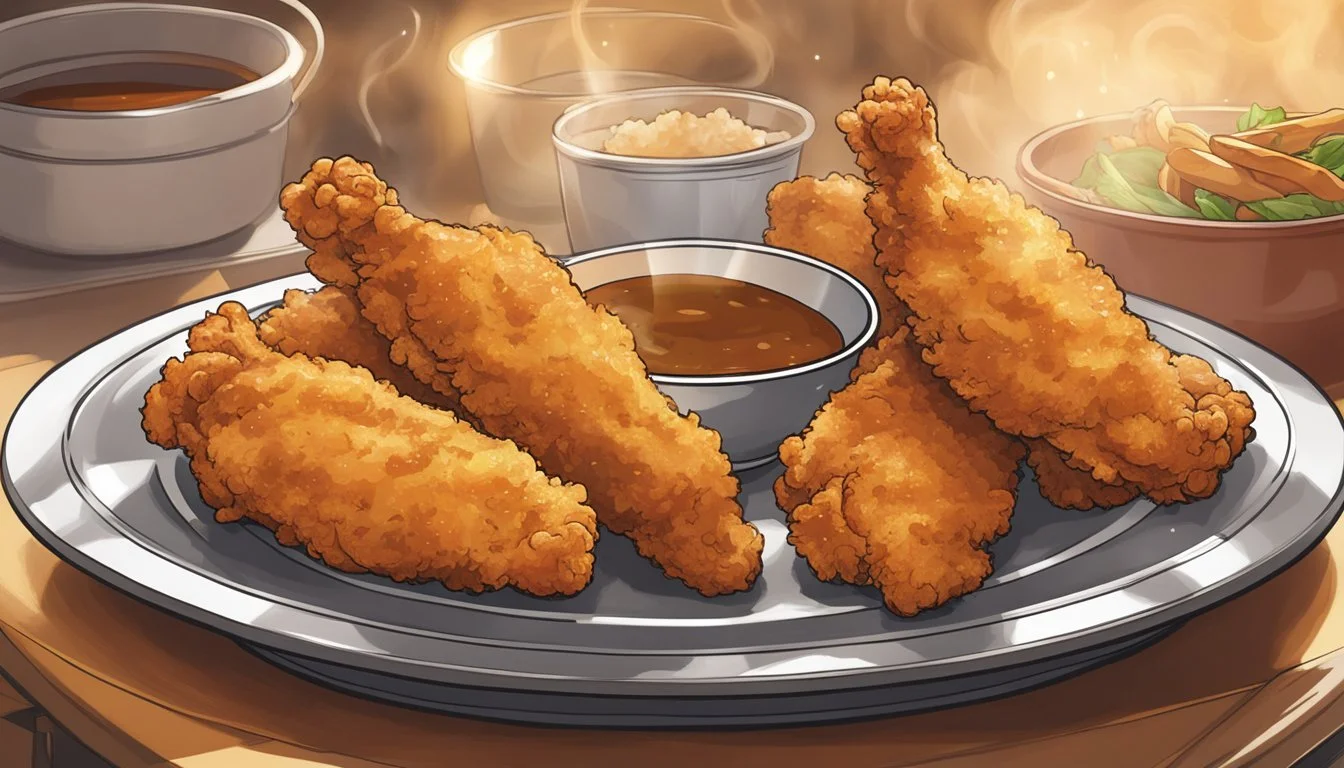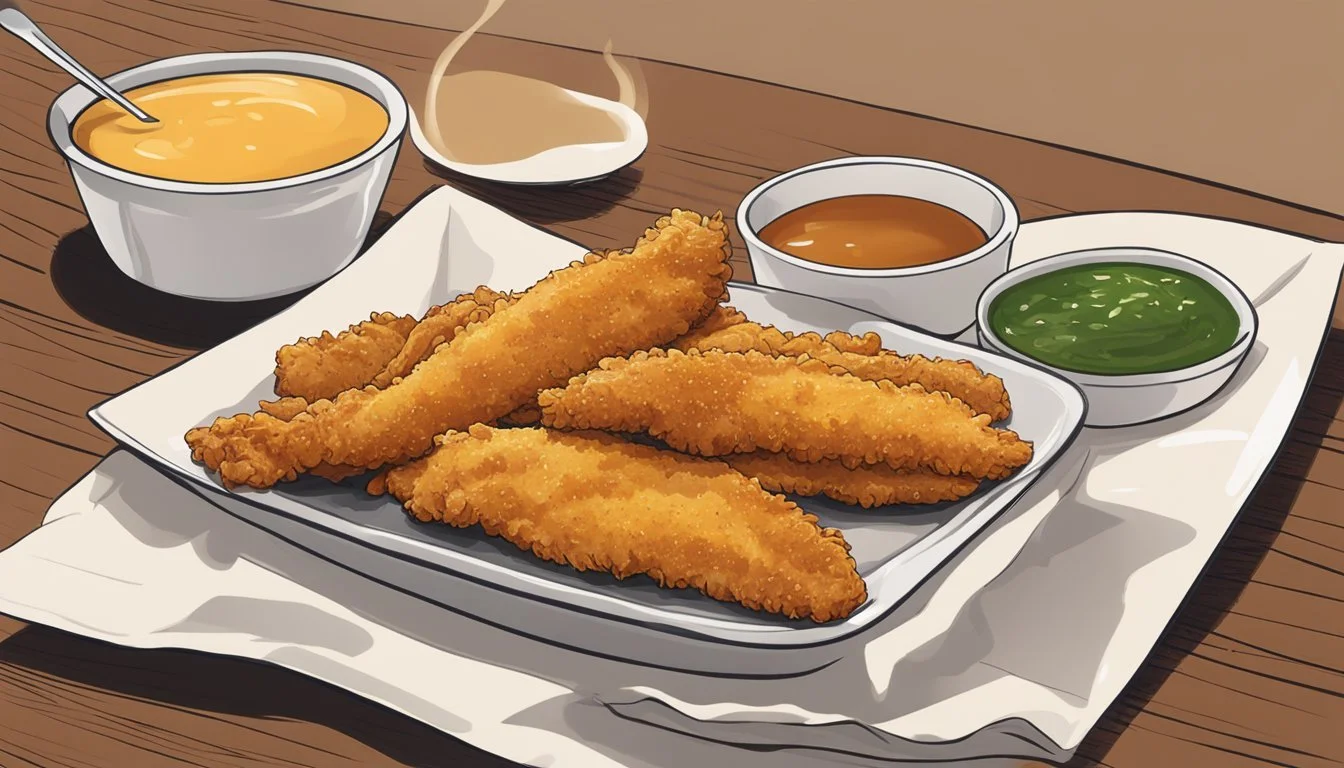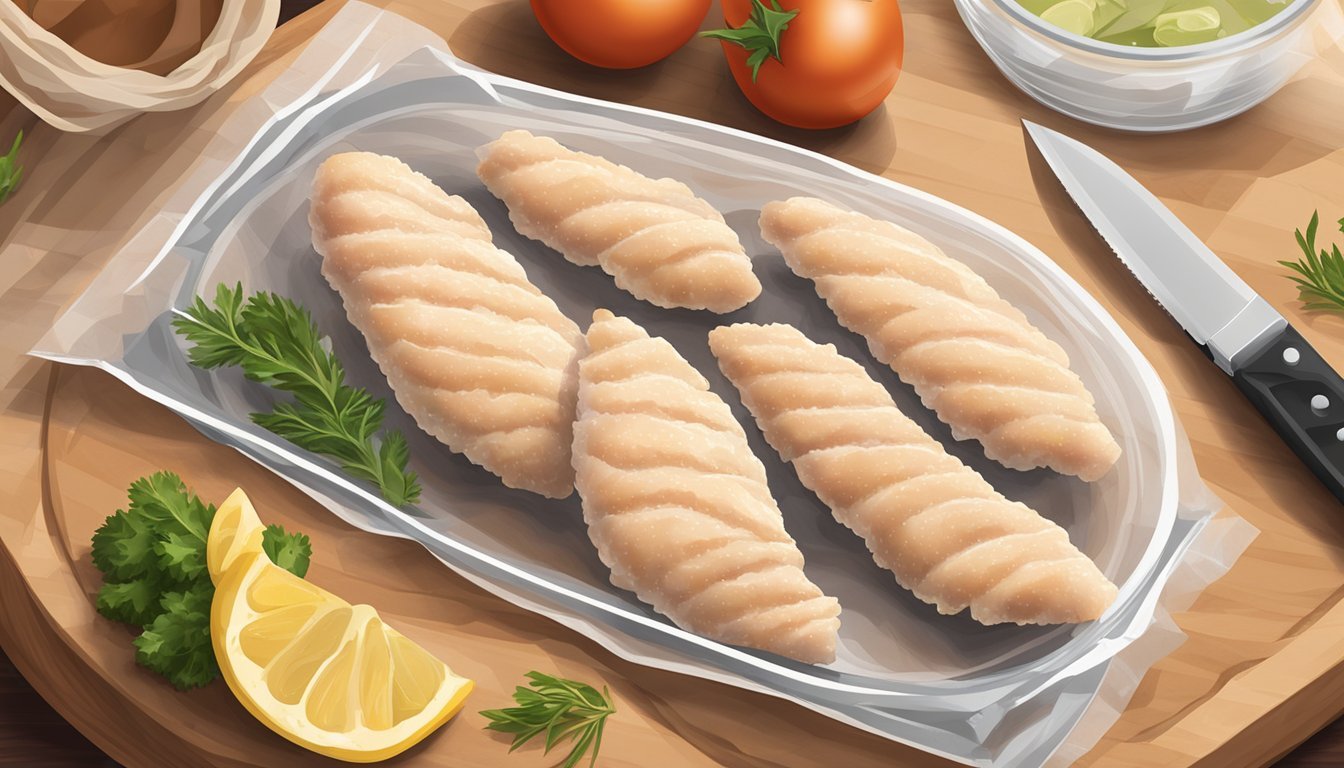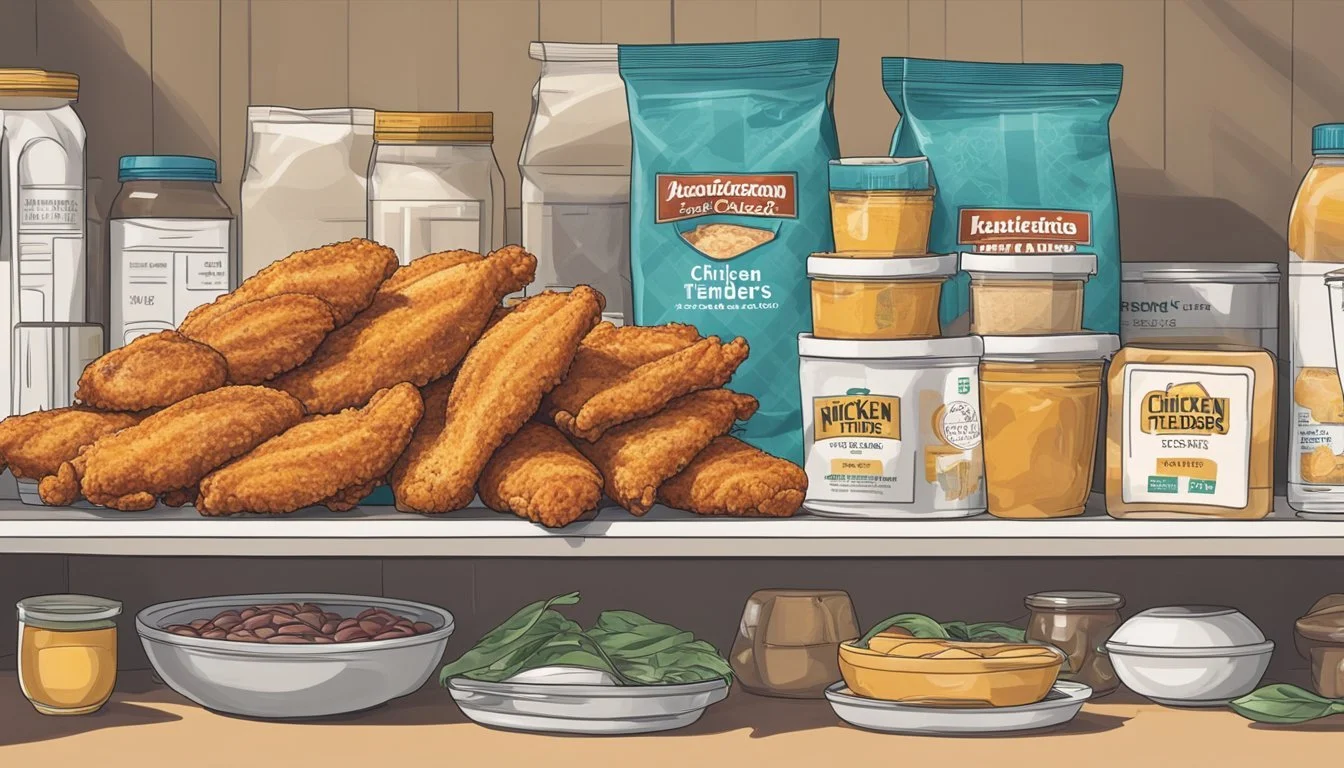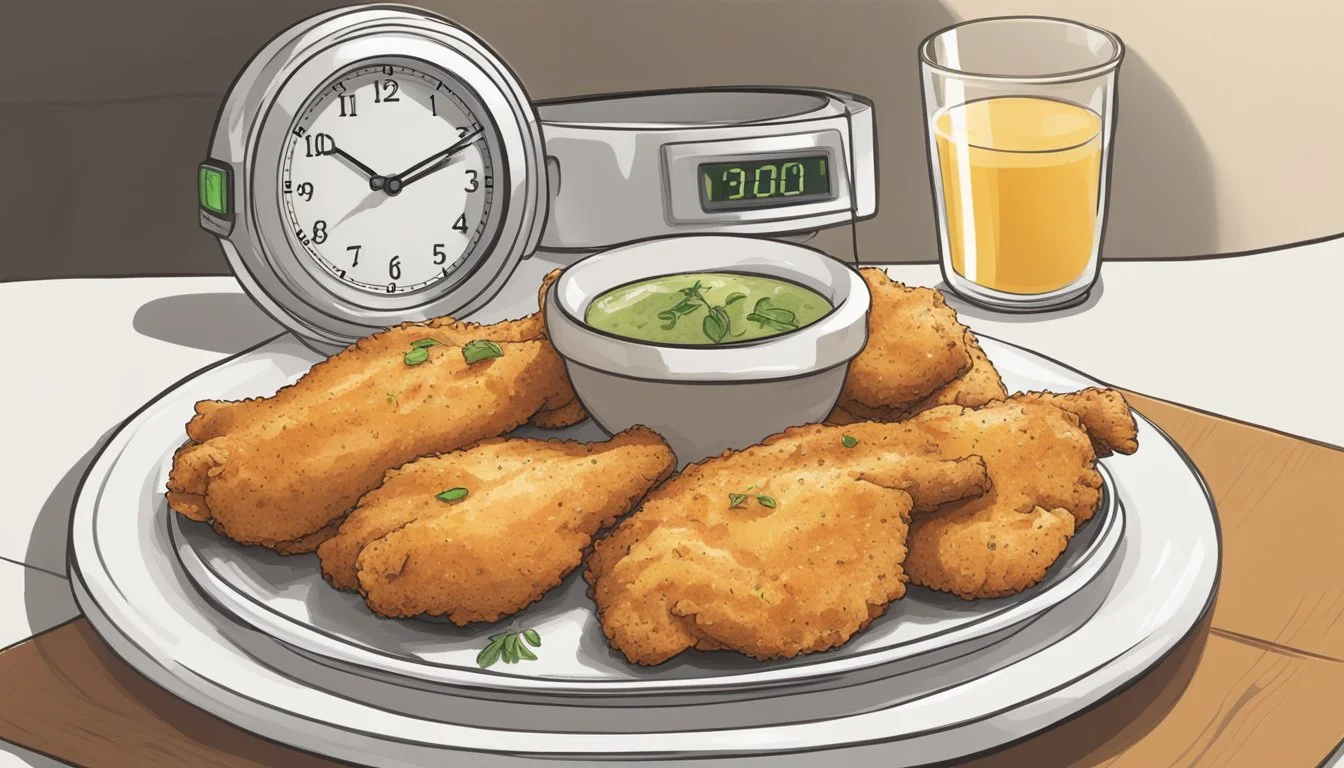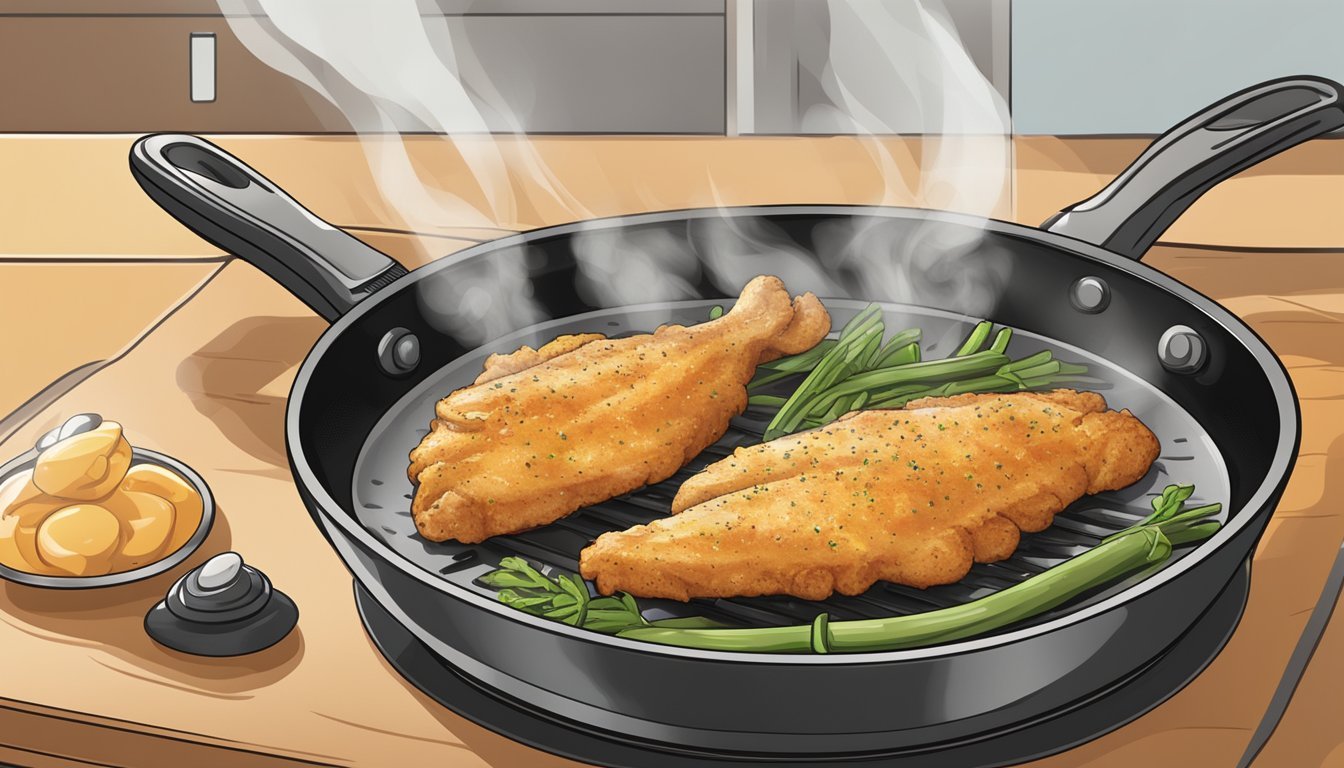How Long Do Chicken Tenders Last?
Shelf Life and Storage Tips
When it comes to the longevity of chicken tenders, understanding their shelf life is key to ensuring safety and quality. Cooked chicken tenders can typically last in the refrigerator for three to four days. This time frame is supported by the U.S. Department of Agriculture's (USDA) guidelines for cooked poultry.
Maintaining the correct storage conditions is crucial. Chicken tenders should be kept in an airtight container or well-wrapped to prevent exposure to air and contamination. This helps to preserve their flavor and texture while minimizing the risk of bacterial growth.
Knowing how long your chicken tenders last can help you plan meals better and reduce food waste. Properly storing and monitoring your leftovers ensures that you can enjoy them safely and deliciously, without having to worry about potential health risks.
Understanding Chicken Tenders
Chicken tenders, known for their tenderness and versatility, are a popular choice for many dishes. This section discusses what chicken tenders are and the differences between raw and cooked chicken tenders.
What Are Chicken Tenders
Chicken tenders are the thin strips of meat attached to the underside of a chicken breast. This part of the chicken is more delicate and naturally tender because it contains less muscle than other parts. Chicken tenders are often used in recipes that require quick cooking due to their size and texture.
These tenders are often sold separately from the breast and can be prepared in various ways, including grilling, baking, or frying. The meat's soft texture makes it a popular ingredient for both children and adults. Chicken tenders are also versatile, absorbing flavors from marinades and spices readily, making them suitable for various cuisines.
Raw vs. Cooked Chicken Tenders
Raw chicken tenders need careful handling and storage to prevent contamination. They should be kept refrigerated at 40°F (4°C) or below and used within 1-2 days for optimal freshness. If kept frozen at 0°F (-18°C), they can be stored for up to nine months. Proper handling includes avoiding cross-contamination with other foods and thorough washing of surfaces that come into contact with raw chicken.
Cooked chicken tenders must reach an internal temperature of 165°F (75°C) to be considered safe for consumption. Once cooked, they can be stored in the refrigerator for up to four days. Freezing cooked tenders extends their shelf life to about 2-6 months. Reheating should be done to a safe temperature to ensure they are safe to eat again.
Safe Preparation and Handling
Proper handling and preparation of chicken tenders are crucial to prevent the growth and spread of harmful bacteria, such as Salmonella and Campylobacter. Follow these guidelines to ensure safety and maintain the quality of the chicken tenders.
Steps to Handle Chicken Tenders Safely
Refrigerate chicken tenders at 40°F (4°C) or lower as soon as possible after purchase. This helps slow the growth of bacteria. Cook chicken tenders to an internal temperature of 165°F (74°C) using a food thermometer to ensure they are safe to eat.
When thawing frozen chicken tenders, use the refrigerator, cold water, or a microwave, but never thaw chicken at room temperature. After thawing, cook the chicken immediately to prevent bacterial growth.
Store raw and cooked chicken tenders separately in sealed containers. Label the containers with dates to keep track of how long they have been stored. Refrigerate leftovers within two hours of cooking to reduce the risk of bacterial contamination.
Avoiding Cross-Contamination
Cross-contamination can lead to foodborne illnesses. Use separate cutting boards and utensils for raw chicken and other foods. Wash hands with soap and water before and after handling raw chicken to prevent the spread of bacteria to other surfaces.
Sanitize all kitchen surfaces that come into contact with raw chicken tenders, including countertops, sinks, and knives. Use a disinfectant or a mixture of one tablespoon of bleach in one gallon of water to clean these areas effectively.
Avoid letting raw chicken touch other foods, especially those eaten raw, such as salads or fruits. Store chicken on the lower shelves of the refrigerator to prevent juices from dripping onto other items. This simple step helps reduce the risk of contamination and keeps the kitchen environment safer.
Storage Guidelines
Proper storage of chicken tenders ensures their safety and quality after cooking. Different methods are required based on how soon you plan to consume them.
Refrigerating Chicken Tenders
Chicken tenders should be stored in the refrigerator at a temperature of 40°F (4°C) or lower. Use airtight containers or wrap them tightly with plastic wrap to prevent exposure to air and moisture.
Store cooked chicken tenders in the fridge for up to four days. Proper sealing helps maintain texture and flavor while reducing the risk of bacterial contamination.
Label containers with the date to track freshness. Do not leave cooked chicken out at room temperature for more than two hours; refrigerate promptly after cooking.
Freezing for Long-Term Storage
For longer storage, chicken tenders can be frozen. Place them in airtight containers or plastic freezer bags to prevent freezer burn and ensure they maintain optimal quality.
Wrap each tender individually with plastic wrap before placing it in containers or bags if they might be thawed incrementally.
Chicken tenders can be safely stored in the freezer for up to six months. When ready to use, thaw overnight in the refrigerator to retain moisture and flavor, rather than using a microwave or hot water, which can degrade texture.
Label your containers with the storage date for easy tracking and effective rotation.
Shelf Life of Chicken Tenders
Chicken tenders have varying shelf lives based on their state—raw or cooked. For optimal safety and quality, it's important to store them properly and use them within the recommended time frames.
Raw Chicken Tenders in the Fridge
Raw chicken tenders should be kept in the refrigerator at or below 40°F (4°C). They generally stay fresh for 1-2 days. It's crucial to ensure they are stored in an airtight container or a sealed plastic bag to prevent contamination and maintain freshness.
For those who buy chicken tenders in bulk, freezing is a viable option. Raw chicken tenders can be frozen for up to 9 months without significant loss of quality, though they are safe to eat indefinitely if kept at 0°F (-18°C).
Cooked Chicken Tenders Shelf Life
Cooked chicken tenders have a longer shelf life compared to raw ones when stored in the fridge. At temperatures below 40°F (4°C), they maintain their quality for 3-4 days. To keep them from drying out or absorbing odors from other foods, use airtight containers or heavy-duty aluminum foil.
Reheating cooked chicken tenders should be done carefully to avoid over-drying. Using a skillet with a lid or an oven at a low temperature helps retain moisture. For longer storage, cooked chicken tenders can be frozen and maintain their best quality for 1-3 months.
Storing cooked chicken tenders at proper temperatures helps in preserving their quality and ensuring they remain safe to consume.
Signs of Spoilage
Identifying spoilage in chicken tenders is crucial for maintaining food safety. Key indicators include visual changes, texture alterations, and unpleasant odors.
Visual and Texture Changes
Spoiled chicken tenders often show obvious visual signs. They may appear discolored, with shades ranging from gray to green. A slimy or sticky texture is another red flag, indicating bacterial growth. Fresh chicken tenders should have a firm, smooth feel.
In addition to color and texture, the presence of mold or foreign substances signals spoilage. Mold can appear as fuzzy patches or distinct spots, varying in color. It's important to inspect chicken tenders carefully. When in doubt, err on the side of caution and discard any suspicious pieces.
Odor and Smell Test
A foul odor is a clear sign that chicken tenders have gone bad. Fresh chicken has little to no scent. Spoiled chicken, however, emits a sour or pungent smell, often compared to rotten eggs. This off-putting aroma is caused by bacteria breaking down proteins in the meat.
If there's any noticeable odor, it's safest to assume the chicken tenders are no longer safe to eat. The smell test is one of the most reliable methods for detecting spoilage. Trust your senses; if the scent is off, don't risk consumption.
Food Safety Concerns
Chicken tenders, if not handled and cooked properly, can pose significant health risks. Primary concerns include foodborne illnesses and ensuring the proper internal temperature during cooking.
Foodborne Illnesses from Chicken
Foodborne illnesses are a major risk when dealing with chicken products. Salmonella and Campylobacter are common bacteria found in raw and undercooked chicken. These bacteria can lead to severe gastrointestinal issues, including nausea, vomiting, and diarrhea.
Contamination can occur at any stage, from farm to table. It is crucial to avoid leaving chicken tenders at room temperature for extended periods. Bacteria multiply rapidly at temperatures between 40°F and 140°F. Proper refrigeration is essential; cooked chicken tenders should be stored at 40°F or below and consumed within three to four days.
Proper Cooking and Internal Temperature
Proper cooking is essential to eliminate harmful bacteria. Chicken tenders must reach a safe internal temperature of 165°F to be considered safe for consumption. Using a food thermometer is the best way to ensure this temperature is achieved.
Cooking methods vary, but oven baking, skillet frying, and grilling are common techniques. It's important to cook chicken tenders evenly, turning them as needed to prevent uneven heating. Avoiding undercooked chicken reduces the risk of foodborne illnesses significantly. Always reheat leftovers to an internal temperature of 165°F to ensure safety.
Reheating and Cooking Tips
Properly reheating chicken tenders ensures safety and an enjoyable taste. These tips also help you incorporate them into various recipes for a quick and delicious meal.
Safely Reheating Chicken Tenders
To reheat chicken tenders, using an oven or air fryer is recommended.
Oven: Preheat to 400°F. Place tenders on a baking sheet lined with aluminum foil and bake refrigerated tenders for 10-15 minutes or frozen ones for 20-25 minutes.
Air Fryer: Preheat to 350-375°F. Arrange tenders in a single layer and cook for around 8-10 minutes, flipping halfway through.
In both methods, spacing the tenders ensures even reheating and crispiness. Avoid the microwave for reheating, as it tends to make tenders soggy.
Incorporating Chicken Tenders into Recipes
Leftover chicken tenders can be repurposed in creative ways.
Salads: Slice and add tenders to a fresh salad for extra protein.
Wraps and Sandwiches: Use warmed tenders in wraps or sandwiches with your favorite vegetables and sauces.
Pasta: Chop tenders and mix them into pasta dishes with a suitable sauce.
These methods not only prevent waste but also provide a quick meal option using leftover chicken. Reheating beforehand ensures the tenders retain their freshness and taste.
Buying and Consumption Advice
Selecting the freshest chicken tenders and understanding the best consumption timelines are key to ensuring food safety and optimal taste. These points will guide you through what to look for at the store and how to handle the tenders post-purchase.
Selecting Fresh Chicken Tenders at the Store
When purchasing chicken tenders, buyers should look for those with a pinkish hue and no strong odors. Freshness is crucial; the meat should be firm to the touch and not slimy.
Checking the packaging date is essential. Opt for packages with the latest dates. Avoid tenders with ice crystals if frozen, as this could indicate thawing and refreezing. If buying organic or free-range, research how they compare in taste and quality to conventional options.
Recommendations for Consumption Timelines
Once bought, fresh chicken tenders should be consumed or cooked within 1-2 days if kept in the refrigerator at 40°F (4°C). If not used within this timeframe, freezing is recommended to extend their shelf life. Frozen chicken tenders can last up to nine months for the best quality.
Cooked chicken tenders should be stored in an airtight container and consumed within 3-4 days. To maintain quality during reheating, cover them to prevent drying out. This ensures both safety and flavor, providing a satisfying eating experience.

